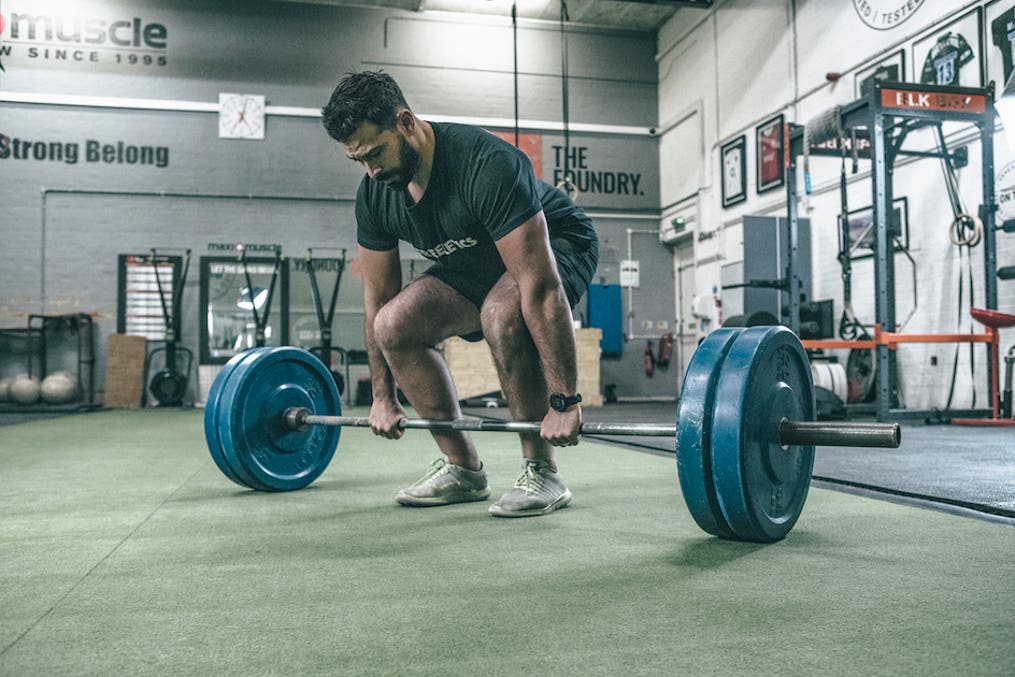The deadlift is a functional full body exercise that trains everything from the calves, hamstrings, quads, glutes and all the way up to the back, lats, traps, biceps and forearms. Very few exercises provide so much bang for your buck in terms of strength gains and muscle growth. But it's also an easy exercise to do wrong and poor technique in a movement using such heavy weights can result in both a lack of progression and injury. Fortunately, training specialist John-Francis Kennedy is on hand to take you through how to master the ultimate full body barbell exercise.
1) Movement mechanics - it’s all in the glutes
The deadlift is a hip-dominant movement. Rather than your legs, you predominantly flex and extend your hips to lift the weight off the ground. This is called a “hip hinge”. A hip hinge allows you to bend over and stand up with a straight back.
It’s all about your ability to push your butt back and driving the hips forward with your glutes. This needs to happen with a “neutral spine” to maintain optimal safety for your lower back.

2) Setup - stay balanced
The setup consists of your stance width and grip. For the traditional Deadlift you stand about hip-width apart. It’s usually narrower than your squat-stance. Toes can be slightly pointed out. Bear in mind though, that there is no one-size-fits-all deadlift stance. Adjust accordingly and see what is most comfortable and powerful for you.
There are various deadlift grips, each with their benefits and drawbacks. . At Freeletics, we prefer the double overhand grip for overall health and safety. A mixed grip (one palm facing up and one palm facing your body) changes the positioning of the upper body and thus creates an imbalance. However, the mixed grip is the stronger grip.Choose whichever grip matches your training goals.

3) Tension - a balloon in your belly
We say that the hardest repetition of the deadlift is the first one, because the bar is at a dead stop. You have no stretch-reflex like that helps you power through. Due to the nature of the deadlift you have to produce maximum tension from the start. Here are our top 3 tips to produce strength and power during the deadlift:
-
Brace your core and create intraabdominal pressure: This goes beyond just flexing your abs. It includes breathing into your belly and diaphragm, engaging your transverse abdominis and tensing up your obliques. Imagine you have a balloon in your belly and you want to expand it to the front, side and back. This will enable you to lift the most amount of weight in the safest manner possible.
-
Create tension in the Hips: For optimal power output, you want to create torque. Torque in the hips comes from the glutes and gives you strength and stability. Imagine to spread the floor with your feet. You should immediately feel the contraction in your glutes. Maintain this tension throughout the movement.
-
Create tension in the shoulders: The principle of creating torque also applies for the muscles that stabilize the shoulders. Try to fully engage your lats by imagining to bend the barbell towards you. This creates peak power and even more stability for your lower back.
Deadlifts are not bad for your back
The Deadlift is an advanced, but incredibly effective compound exercise. The common misconception that deadlifts are bad for your back comes from improper movement mechanics coupled with too much weight on the bar. If you mind the mechanics, establish a proper setup and create the necessary tension then the deadlift is not only not bad for your back, but can play a major part in preventing lower back pain.